This article was medically reviewed by Shervin Eshaghian, MD. Dr. Shervin Eshaghian is a Board Certified cardiologist and the owner of Beverly Hills Cardiology based in the Los Angeles, California metro area. Dr. Eshaghian has over 13 years of cardiology experience, including serving on the medical staff at Cedars-Sinai Medical Center. He holds a BS in Psycho-Biology from the University of California, Los Angeles (UCLA) and an MD from the Albert Einstein College of Medicine. Furthermore, Dr. Eshaghian completed an internship, residency, and fellowship at Cedars Sinai Medical Center, where he was awarded the Leo Rigler Outstanding Academic Achievement Award and the Elliot Corday Fellow of the Year Award.
There are 21 references cited in this article, which can be found at the bottom of the page.
wikiHow marks an article as reader-approved once it receives enough positive feedback. In this case, 84% of readers who voted found the article helpful, earning it our reader-approved status.
This article has been viewed 149,891 times.
Sudden cardiac arrest is the leading cause of death among adults over the age of 40 in the United States and other countries. About as many people die each year from SCA as die from Alzheimer's disease, assault with firearms, breast cancer, cervical cancer, colorectal cancer, diabetes, HIV, house fires, motor vehicle accidents, prostate cancer and suicides combined.[1] However, with cardiopulmonary resuscitation (CPR) and the use of an AED, survival rates increase to 38%. Learn how to treat sudden cardiac arrest so that you will know what to do in an emergency.[2]
Steps
Detecting Sudden Cardiac Arrest
-
1Watch for a sudden collapse or fainting. Someone who has just experienced cardiac arrest may lose consciousness and fall to the ground without warning. If you notice someone collapse or faint, go over to the person right away.[3]
-
2Check for a pulse. If someone has just had sudden cardiac arrest, then that person will not have a pulse. Check the person’s radial or carotid pulse to see if you can detect anything.[4]
- The radial pulse is located on your wrist just under the base of the thumb/palm. Feel around the person’s wrist, using your index (first finger) and middle finger on one hand until you find the pulse. If you can't feel a beating pattern than there is no pulse.
- The carotid pulse is located on the neck.[5] The carotid arteries are just underneath the jaw on both sides of the neck. Press the same two fingers on one side of the neck in the soft hollow area just beside the person’s Adam’s apple.[6]
Advertisement -
3See if the person is breathing correctly. A person who has experienced a sudden cardiac arrest will either be gasping for air or not breathing at all. "Look, listen, and feel" if the person is breathing or not. Watch for lung movement to determine if the person is getting any oxygen. Keep in mind that time is critical and every minute that the person is without oxygen increases his risk of permanent brain damage.[7]
- Place your hands, palms down, on the person’s chest. Then, check to see if you can feel or see a rise and fall of the chest indicating breathing. An alternative method is to listen for breathing by placing your ear close to the person’s mouth.
-
4Determine if the person is alert. A person who has had sudden cardiac arrest will not be alert either. This means that if you say something to the person, she will not respond or make any sign that she has heard you.[8]
- Medical practitioners and first-responce assistants suggest using the C.O.W.S system: Can you hear me? Open your eyes! What's your name? Squeeze my hand (gently place your hand on their palm)![9]
Administering Basic Life Support
-
1Tell someone to call 911 or call yourself if no one else is around. This should be your first priority. Someone who has suffered sudden cardiac arrest will need immediate medical attention and will need to be taken to a hospital for the best chances of survival.[10] Make sure that you call for help right away or have someone else do so.[11]
- Do not just shout for anyone to call 911. If there are other people around, select one person, look him in the eye, and tell him to contact emergency services. Say something like, "You, the man in the red shirt! Call 911 now!"
-
2Locate an AED. If you are somewhere that might have a public AED (cardiac defibrillator), ask someone to try to locate it and bring it to you. If one is available right away, then use it. An AED can analyze the heart rhythm, deliver life-saving shocks, and provide instructions as well as images to help you revive the person.[12]
-
3Check for breathing and a pulse again. Quickly check the unconscious person’s pulse and breathing again to see if she has resumed breathing or if you can detect a pulse. If not, then you will need to start CPR.
- Cardiopulmonary resuscitation allows manual compression of the heart to pump blood and manual assisted breathing to get oxygen to the person. Those who have no pulse and/or are not able to breath on their own require immediate CPR.
-
4Position the victim. Make sure the person is lying face up. You will need to be able to press on the person’s chest and deliver breaths, so turn the person over if he is not lying face up.
- If you suspect head and/or neck injury, do not move the person. This may result in paralysis or other serious complications. Provide as much aid as you can without moving the person.[13]
-
5Get yourself into position. Before you start delivering CPR, take a moment to make sure that you are in the right position. Place the heel of one of your hands on the center of the chest over the lower part of the bony center (breastbone). Place the heel of the other hand over top on the first hand. Straighten your arms and make sure your shoulders are directly over your hands.[14]
-
6Begin compressions. Once you are in position, you can begin compressions. Push down hard and fast. Your compressions should press down a minimum of two inches on the chest and allow for full chest recoil as well.[15]
- Your pace should be such that you are delivering about 100 compressions per minute. An easy way to keep this pace is to deliver compressions to the beat of the song "Stayin' Alive."[16]
-
7Deliver two breaths of air after every 30 compressions. You should count your compressions so that you know when to deliver the two breaths. Before delivering the two breaths, tilt the person’s head by back slightly by placing the palm of one hand on the forehead and using your other hand to lift the chin. Once the head is tilted, pinch the person’s nose, cover the person's mouth with yours, and blow until you see the chest rise. Give the person two breaths. Each breath should take one second to deliver.[17]
- After completing 30 compressions, deliver the two breaths and then deliver 30 more compressions. Keep repeating the cycle until help or an AED arrives.
- If you are not certified in CPR, you can skip the breaths. The emphasis for a bystander is on delivering chest compressions.[18]
- CPR is exhausting and can be intense (you may break the person's ribs while delivering compressions). It's okay to trade off with someone else if you become exhausted — it doesn't help if you are too tired to deliver CRP properly.
- If you suspect head or neck trauma it is best not to perform the tilt technique, instead a jaw thrust should be performed so as not to aggravate the neck. Place the palms of your hand over the person’s cheek bone and place fingers under the angle of the jaw and lift the jaw upward.[19]
Using an Automated External Defibrillator
-
1Understand what an Automated external defibrillator (AED) does. The heart pumps blood or beats due to an internal electrical system. This allows the heart to beat at a constant rhythm. When this system malfunctions or stops, the heart stops beating or beats irregularly losing its rhythm. An AED is a portable device that checks the heart rhythm and can send an electric shock to the heart to try to restore a normal rhythm if necessary.[20]
- If an AED is available, then use it immediately! If it is not available, then continue CPR until it is or until help arrives.
- It is safe to use an AED on a pregnant woman. Defibrillation does not transfer any significant electrical current to a fetus.
- The AED machine only delivers a shock once it has analyzed the heart rhythm and determines if it is needed. If so, it will prompt everyone to stand clear of the person receiving the shock and not to touch them. However, you should still screen to make sure no one is in contact with the person before pressing the “shock” button by yelling "Clear!"
-
2Find someone who knows how to use an AED if possible. A defibrillator works best when used by someone with proper training. In situations where lots of people are around, ask if anyone knows how to use a defibrillator. If no one is available, do not panic. The machine gives directions and voice prompts once it has been turned on, so that anyone can use it.
-
3Check for puddles or water near the person. Water conducts electricity, so it is a bad idea to use an AED in wet conditions. You may end up shocking yourself and others as well as the victim. If you notice that the person is lying in or near a puddle, then move the person to a dry area before using the AED.[21]
-
4Turn on the AED and follow the instructions it gives. Although having some training in how to use an AED is ideal, the device will give you step-by-step instructions on how to use it. You'll hear voice prompts and/or see prompts on a screen. Follow the instructions carefully.
- A 911 operator may also be able to help guide you as you use the device. If you are not sure how to work the AED and no one else is around, call 911 and ask for guidance.
-
5Expose the person's chest and attach the sensors. If the person's chest is wet, dry it off. AEDs have sticky pads with sensors called electrodes. Apply the pads to the person's chest as pictured/described in the instructions or as described by the voice instructions.
- Place one pad on the right center of the person's chest above the nipple.
- Place the other pad slightly below the other nipple and to the left of the rib cage.
-
6Press the AED's "analyze" button. The “analyze” button will check to see if the person has a pulse. Before you press the button, make sure no one is touching the person. Stay clear and instruct others to do the same while the machine checks the person's heart rhythm.[22]
-
7Deliver a shock when the machine instructs you to. If a shock is needed, the AED will let you know when to deliver it. Before you push the AED's "shock" button, stand clear of the person and make sure that others are clear as well.[23]
-
8Resume CPR after the shock has been delivered. After a shock has been delivered by the AED, resume CPR for two minutes. Give 30 compressions followed by two breaths. After two minutes of CPR check the neck artery for a pulse. If no pulse is present, press the “analyze” button to analyze the heart rhythm again and if a shock is advised deliver shock by pressing the “shock” button.[24]
- Repeat this process until help arrives or pulse returns.
Warnings
- One of the most common reasons SCA victims do not survive is that bystanders hesitate to call 9-1-1, start CPR and use AEDs right away. If you want to save a life, don't hesitate to get involved. Your actions can only help. Doing nothing is the worst option.⧼thumbs_response⧽
References
- ↑ http://www.sca-aware.org/about-sca
- ↑ https://www.heart.org/en/health-topics/cardiac-arrest/about-cardiac-arrest
- ↑ https://medlineplus.gov/suddencardiacarrest.html
- ↑ https://www.heart.org/en/health-topics/heart-attack/about-heart-attacks/heart-attack-or-sudden-cardiac-arrest-how-are-they-different
- ↑ https://medlineplus.gov/ency/imagepages/19386.htm
- ↑ http://www.nhs.uk/chq/Pages/2314.aspx?CategoryID=72&SubCategoryID=725
- ↑ https://www.heart.org/en/health-topics/cardiac-arrest/emergency-treatment-of-cardiac-arrest
- ↑ https://www.heart.org/en/health-topics/cardiac-arrest/emergency-treatment-of-cardiac-arrest
- ↑ https://www.australiawidefirstaid.com.au/resources/what-is-drsabcd
- ↑ Shervin Eshaghian, MD. Board Certified Cardiologist. Expert Interview. 26 June 2020.
- ↑ https://www.heart.org/en/health-topics/heart-attack/about-heart-attacks/heart-attack-or-sudden-cardiac-arrest-how-are-they-different
- ↑ https://www.heart.org/en/health-topics/heart-attack/about-heart-attacks/heart-attack-or-sudden-cardiac-arrest-how-are-they-different
- ↑ https://www.nhs.uk/conditions/first-aid/after-an-accident/
- ↑ https://www.nhs.uk/conditions/first-aid/cpr/
- ↑ https://cpr.heart.org/en/resources/what-is-cpr
- ↑ https://www.heart.org/en/news/2019/06/11/magician-turned-doctor-knows-the-trick-to-helping-save-lives-with-cpr-just-watch
- ↑ https://www.betterhealth.vic.gov.au/health/conditionsandtreatments/cardiopulmonary-resuscitation-cpr
- ↑ https://cpr.heart.org/en/cpr-courses-and-kits/hands-only-cpr
- ↑ https://www.healthdirect.gov.au/how-to-perform-cpr
- ↑ http://www.nhlbi.nih.gov/health/health-topics/topics/aed
- ↑ https://ehs.missouri.edu/work/aed
- ↑ https://www.nhlbi.nih.gov/health/defibrillators
- ↑ https://www.sja.org.uk/get-advice/first-aid-advice/how-to/how-to-use-a-defibrillator/
- ↑ https://www.sja.org.uk/get-advice/first-aid-advice/how-to/how-to-use-a-defibrillator/
- ↑ https://www.reuters.com/article/us-cpr-often-leads-to-broken-ribs-idUSBRE8721IF20120803
About This Article
To treat sudden cardiac arrest, call 911 immediately, since medical attention will lead to the person’s best chances of survival. Next, find out if there’s an AED machine nearby, which can analyze heart rhythm and deliver life-saving shocks. In order to use an AED machine, turn it on and follow the instructions on the screen or the voice prompts. In most cases, you’ll be told to expose the person’s chest, attach the sensors, and push the “analyze” button to see if the person has a pulse. When a shock is needed, the machine will warn you to make sure no one is touching the person to prevent anyone else from receiving a shock. If you can’t locate an AED, prepare to administer CPR until emergency services arrives. For more advice from our Medical co-author, including how to perform CPR, keep reading!

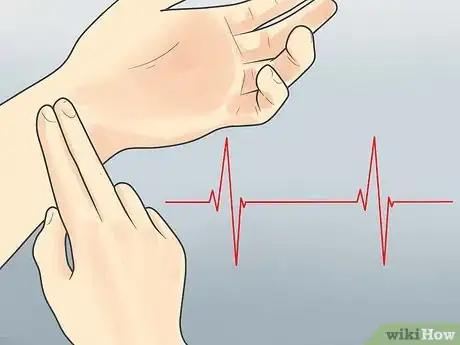
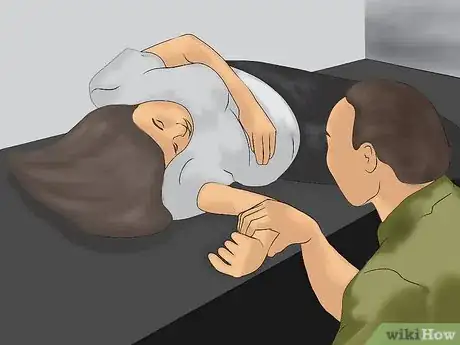
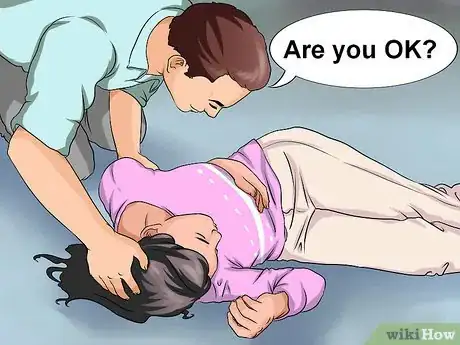



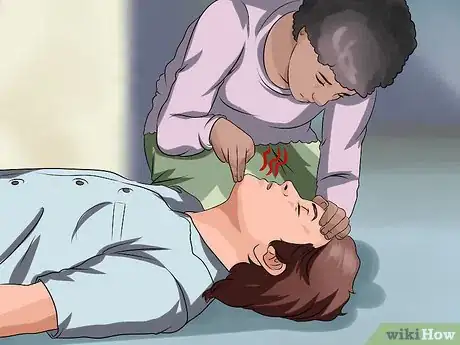


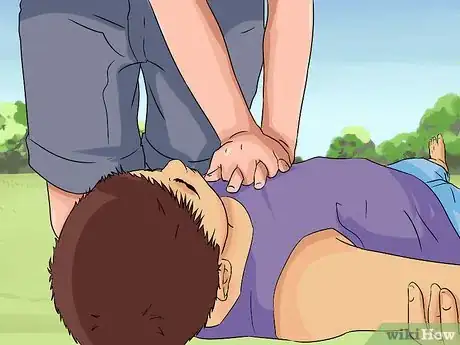
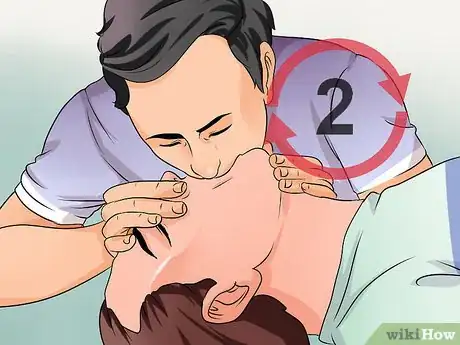


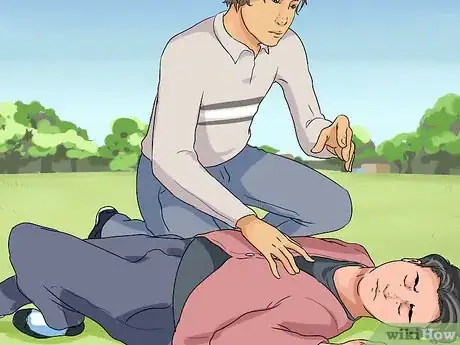
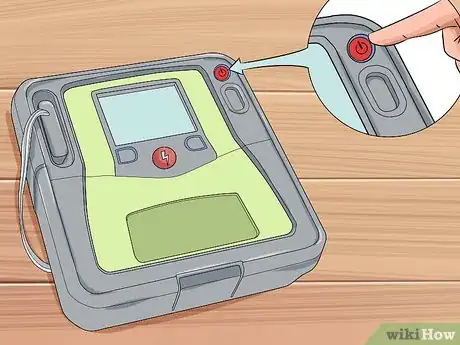
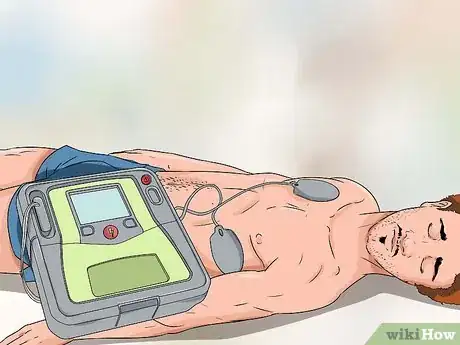
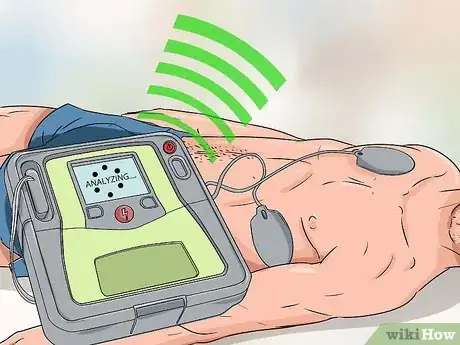
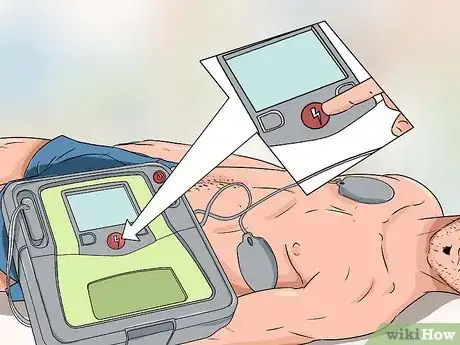
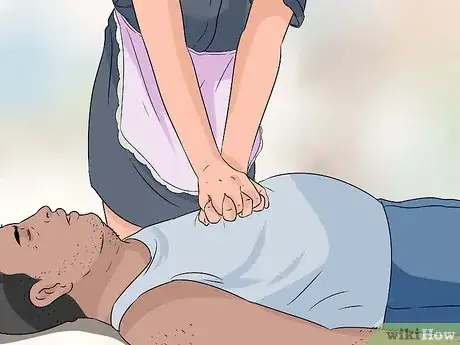
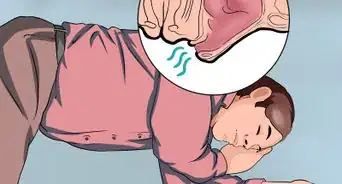
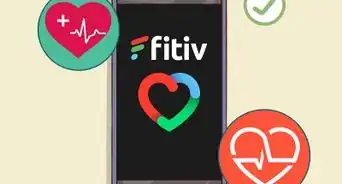
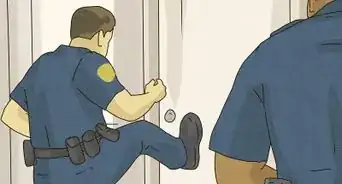


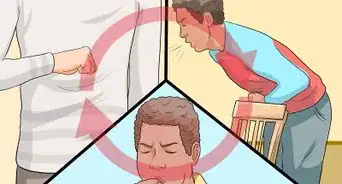
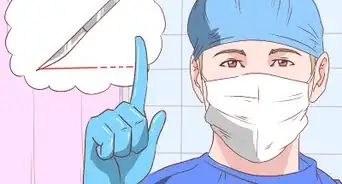




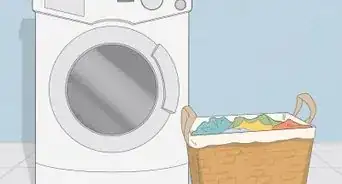










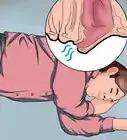
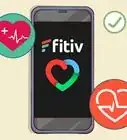
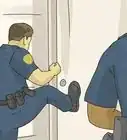




































Medical Disclaimer
The content of this article is not intended to be a substitute for professional medical advice, examination, diagnosis, or treatment. You should always contact your doctor or other qualified healthcare professional before starting, changing, or stopping any kind of health treatment.
Read More...